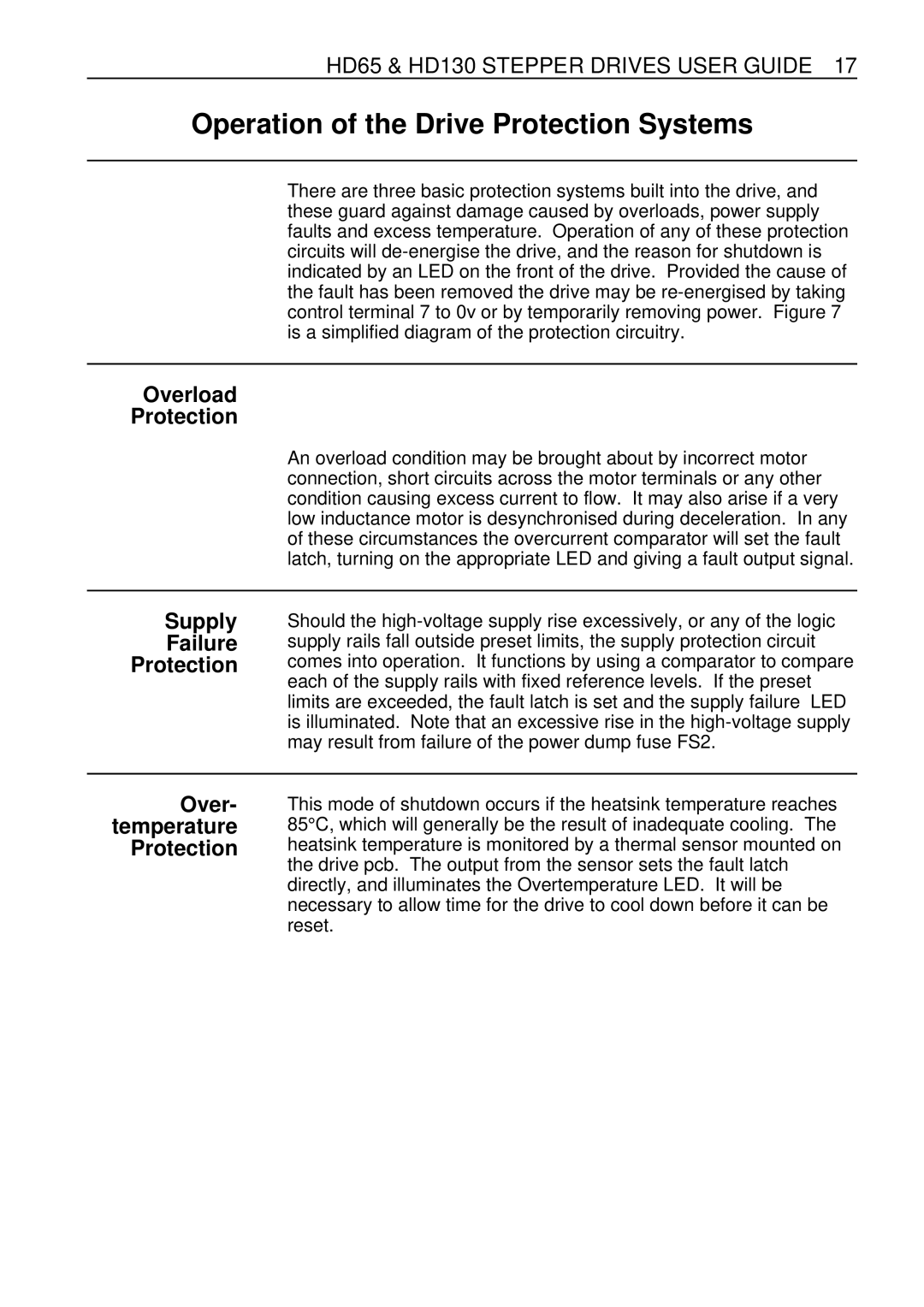
HD65 & HD130 STEPPER DRIVES USER GUIDE 17
Operation of the Drive Protection Systems
There are three basic protection systems built into the drive, and these guard against damage caused by overloads, power supply faults and excess temperature. Operation of any of these protection circuits will
Overload |
|
Protection |
|
| An overload condition may be brought about by incorrect motor |
| connection, short circuits across the motor terminals or any other |
| condition causing excess current to flow. It may also arise if a very |
| low inductance motor is desynchronised during deceleration. In any |
| of these circumstances the overcurrent comparator will set the fault |
| latch, turning on the appropriate LED and giving a fault output signal. |
|
|
Supply | Should the |
Failure | supply rails fall outside preset limits, the supply protection circuit |
Protection | comes into operation. It functions by using a comparator to compare |
| each of the supply rails with fixed reference levels. If the preset |
| limits are exceeded, the fault latch is set and the supply failure LED |
| is illuminated. Note that an excessive rise in the |
| may result from failure of the power dump fuse FS2. |
Over- temperature Protection
This mode of shutdown occurs if the heatsink temperature reaches 85°C, which will generally be the result of inadequate cooling. The heatsink temperature is monitored by a thermal sensor mounted on the drive pcb. The output from the sensor sets the fault latch directly, and illuminates the Overtemperature LED. It will be necessary to allow time for the drive to cool down before it can be reset.
